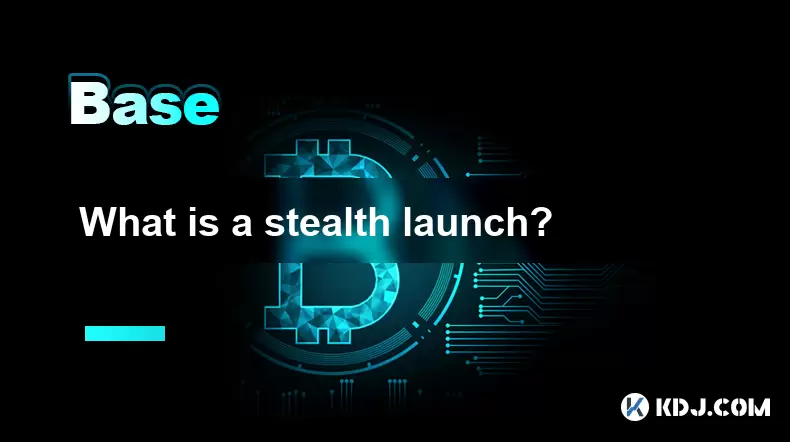-
 Bitcoin
Bitcoin $108,338.0981
-0.13% -
 Ethereum
Ethereum $2,566.4077
1.16% -
 Tether USDt
Tether USDt $1.0001
-0.01% -
 XRP
XRP $2.2841
-2.59% -
 BNB
BNB $658.5241
-0.17% -
 Solana
Solana $150.3819
-1.08% -
 USDC
USDC $0.9999
-0.01% -
 TRON
TRON $0.2864
-0.24% -
 Dogecoin
Dogecoin $0.1694
0.24% -
 Cardano
Cardano $0.5813
-0.72% -
 Hyperliquid
Hyperliquid $37.8292
-4.60% -
 Bitcoin Cash
Bitcoin Cash $503.3593
1.69% -
 Sui
Sui $2.8784
-0.69% -
 Chainlink
Chainlink $13.4784
-0.43% -
 UNUS SED LEO
UNUS SED LEO $9.0793
-0.27% -
 Stellar
Stellar $0.2537
-0.41% -
 Avalanche
Avalanche $18.0047
-0.23% -
 Shiba Inu
Shiba Inu $0.0...01181
1.56% -
 Hedera
Hedera $0.1608
0.49% -
 Toncoin
Toncoin $2.7568
-0.93% -
 Litecoin
Litecoin $86.4121
-0.20% -
 Monero
Monero $313.7273
-0.86% -
 Polkadot
Polkadot $3.3715
-0.66% -
 Dai
Dai $1.0001
0.01% -
 Ethena USDe
Ethena USDe $1.0004
0.03% -
 Bitget Token
Bitget Token $4.2902
-0.54% -
 Uniswap
Uniswap $7.5361
2.73% -
 Aave
Aave $285.6090
-0.55% -
 Pepe
Pepe $0.0...09958
0.28% -
 Pi
Pi $0.4560
-0.65%
What is a short squeeze in crypto?
2025/07/08 13:14

Understanding the Concept of a Short Squeeze
A short squeeze is a market phenomenon that occurs when a cryptocurrency's price rises sharply, forcing traders who bet on its decline to close their positions. This typically happens in markets with high short interest, where many investors have taken leveraged positions expecting the price to fall. As the price starts to rise instead, these traders face mounting losses and are compelled to buy back the asset to limit further damage.
In the context of crypto, this situation can be exacerbated by the volatile nature of digital assets. Since cryptocurrencies often experience rapid price swings, short squeezes can unfold very quickly, sometimes within minutes or even seconds. The result is a self-reinforcing cycle: as more short sellers cover their positions, demand increases, pushing the price even higher.
Short squeeze scenarios are particularly relevant in futures and margin trading platforms where leverage amplifies both gains and losses.
The Mechanics Behind a Short Squeeze
To understand how a short squeeze unfolds, it's important to first grasp the mechanics of short selling in crypto. Traders borrow an asset—often using collateral—and sell it at the current market price, hoping to repurchase it later at a lower price and pocket the difference. However, if the price moves against them, they risk being liquidated.
When the price begins to rise rapidly, especially due to unexpected news, whale movements, or technical breakouts, short sellers start to panic. They rush to buy back the asset before their positions are forcibly closed by the exchange—a process known as liquidation. This sudden surge in buying pressure pushes the price up further, creating a feedback loop.
- Traders open short positions using borrowed funds or derivatives.
- Price unexpectedly rises, triggering margin calls or automatic liquidations.
- Sellers begin covering their shorts by purchasing the underlying asset.
- Increased demand accelerates upward movement of the price.
This cascade can lead to massive volatility in a short period of time.
Identifying Signs of an Impending Short Squeeze
Certain indicators can help traders anticipate a potential short squeeze in the crypto market. One key metric is funding rates on perpetual futures contracts. If funding rates become increasingly negative, it suggests that most traders are betting on a price drop, signaling high short interest.
Another useful tool is the short liquidation ratio, which shows how much capital has been liquidated on the short side compared to the long side over a given period. A spike in short liquidations may indicate that a squeeze is underway or about to occur.
- Monitor open interest on major futures exchanges to gauge the level of short exposure.
- Watch for unusual spikes in volume accompanied by strong price momentum.
- Use sentiment analysis tools to assess whether fear dominates the market.
These signals, while not foolproof, can provide early warnings of a possible squeeze.
How to Navigate a Short Squeeze as a Trader
For traders caught in a short squeeze, timing becomes critical. Those holding short positions must decide whether to hold through temporary volatility or cut their losses early. For those on the long side, recognizing a developing squeeze can present an opportunity to ride the momentum.
One strategy involves entering a long position after confirming signs of a squeeze, such as rapid price increases and rising volume. Traders should set tight stop-loss orders to protect against sudden reversals once the squeeze runs out of steam.
- Set clear entry and exit points based on technical indicators like RSI or MACD.
- Avoid over-leveraging to prevent forced liquidation during extreme volatility.
- Keep an eye on order books to detect large buy walls or whale activity that might fuel the squeeze.
Proper risk management is essential to avoid getting swept up in the chaos of a short squeeze.
Historical Examples of Short Squeezes in Crypto Markets
There have been several notable instances of short squeezes in the crypto space. One prominent example occurred during Bitcoin’s rally in late 2020 and early 2021, where institutional adoption and retail frenzy led to rapid price appreciation. During this period, billions of dollars worth of short positions were liquidated across major exchanges.
Another case was seen with Dogecoin in April 2021, when social media hype and celebrity endorsements triggered a parabolic rise. The overwhelming buying pressure caused a massive short squeeze, leading to significant losses for bearish traders.
- Ethereum experienced similar patterns during DeFi summer and NFT booms.
- Altcoins often see amplified effects due to thinner order books and higher volatility.
- Exchange-specific squeezes can also occur due to liquidity imbalances.
These cases highlight how powerful short squeezes can be in shaping short-term price action.
Frequently Asked Questions (FAQs)
Q: Can a short squeeze happen on any cryptocurrency?
Yes, any cryptocurrency with sufficient trading volume and open short interest can experience a short squeeze. While larger-cap assets like Bitcoin and Ethereum are more commonly affected due to higher liquidity and participation, smaller altcoins can be even more susceptible because of thinner markets.
Q: How does a short squeeze differ from a pump and dump?
A short squeeze is driven by technical and market forces involving leveraged positions and liquidations. In contrast, a pump and dump scheme involves coordinated efforts by groups to artificially inflate prices before selling off en masse. While both can cause rapid price spikes, the motivations and mechanisms behind them are different.
Q: Is it safe to trade during a short squeeze?
Trading during a short squeeze carries significant risk due to the heightened volatility and unpredictable nature of such events. While there may be profit opportunities, proper risk management—including stop-loss placement and limited leverage—is crucial to avoid substantial losses.
Q: Are short squeezes legal in the crypto market?
Yes, short squeezes are a natural outcome of market dynamics and are not considered illegal. However, any attempt to manipulate the market intentionally—such as spreading false information to trigger a squeeze—would be against regulatory guidelines and could result in legal consequences.
免責聲明:info@kdj.com
所提供的資訊並非交易建議。 kDJ.com對任何基於本文提供的資訊進行的投資不承擔任何責任。加密貨幣波動性較大,建議您充分研究後謹慎投資!
如果您認為本網站使用的內容侵犯了您的版權,請立即聯絡我們(info@kdj.com),我們將及時刪除。
- Coinbase(Coin)IPO閃回:集會過度擴展還是剛開始?
- 2025-07-08 22:50:12
- Toonie麻煩:像專家一樣發現假貨
- 2025-07-08 22:50:12
- Coinbase,Crypto Stocks和Ozak AI:乘坐Web3浪潮
- 2025-07-08 23:10:14
- BTC,打snter代幣和加密貨幣場景:有什麼交易?
- 2025-07-08 23:15:12
- 模因硬幣,早期投資,拋物線增長:捕捉波浪
- 2025-07-08 22:30:12
- 加密,機構,BTC&ETH:新時代黎明
- 2025-07-08 22:30:12
相關知識

What is a user-generated content (UGC) NFT platform?
2025-07-04 13:49:21
<h3>Understanding the Concept of a UGC NFT Platform</h3><p>A user-generated content (UGC) NFT platform is a digital marketplace or e...

What is composability in DeFi?
2025-07-06 16:07:28
<h3>Understanding the Concept of Composability in DeFi</h3><p>Composability in DeFi refers to the ability of decentralized finance p...

What is a "crypto primitive"?
2025-07-05 22:14:34
<h3>Defining the Concept of a Crypto Primitive</h3><p>In the context of blockchain and cryptocurrency, a crypto primitive refers to ...

What is a crypto narrative?
2025-07-07 22:56:30
<h3>Defining the Concept of a Crypto Narrative</h3><p>A crypto narrative refers to the overarching story or theme that drives intere...

What is a stealth launch?
2025-07-08 06:42:39
<h3>What Exactly Defines a Stealth Launch in Cryptocurrency?</h3><p>A stealth launch refers to the practice of launching a cryptocur...

What is a fair launch?
2025-07-05 19:31:58
<h3>Understanding the Concept of a Fair Launch</h3><p>A fair launch refers to the release of a cryptocurrency or blockchain project ...

What is a user-generated content (UGC) NFT platform?
2025-07-04 13:49:21
<h3>Understanding the Concept of a UGC NFT Platform</h3><p>A user-generated content (UGC) NFT platform is a digital marketplace or e...

What is composability in DeFi?
2025-07-06 16:07:28
<h3>Understanding the Concept of Composability in DeFi</h3><p>Composability in DeFi refers to the ability of decentralized finance p...

What is a "crypto primitive"?
2025-07-05 22:14:34
<h3>Defining the Concept of a Crypto Primitive</h3><p>In the context of blockchain and cryptocurrency, a crypto primitive refers to ...

What is a crypto narrative?
2025-07-07 22:56:30
<h3>Defining the Concept of a Crypto Narrative</h3><p>A crypto narrative refers to the overarching story or theme that drives intere...

What is a stealth launch?
2025-07-08 06:42:39
<h3>What Exactly Defines a Stealth Launch in Cryptocurrency?</h3><p>A stealth launch refers to the practice of launching a cryptocur...

What is a fair launch?
2025-07-05 19:31:58
<h3>Understanding the Concept of a Fair Launch</h3><p>A fair launch refers to the release of a cryptocurrency or blockchain project ...
看所有文章

























































































